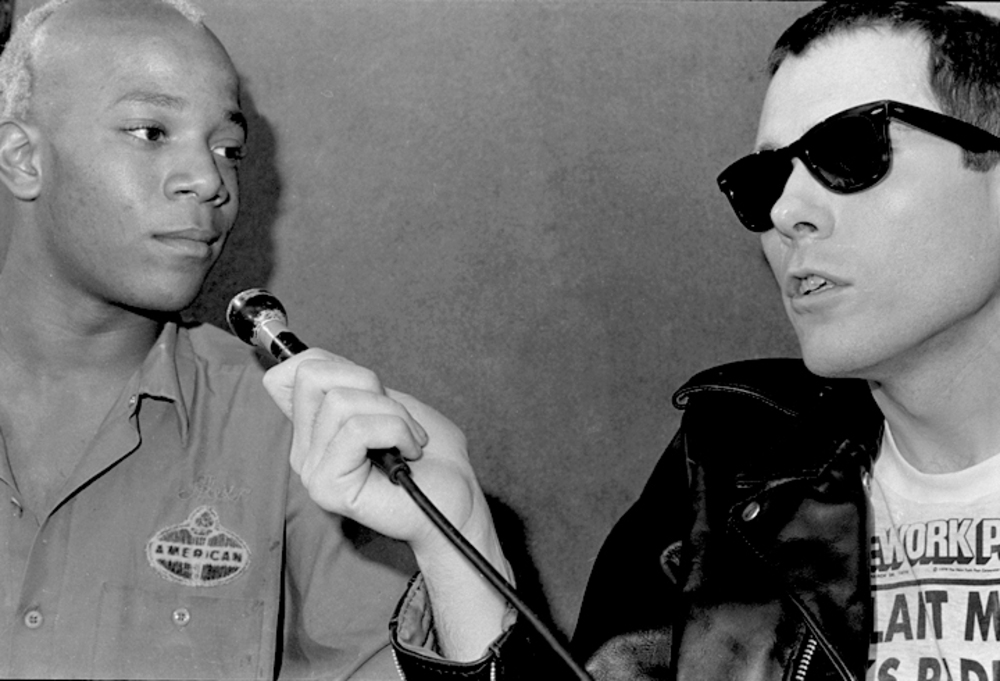photograph by Margret Links
Before he became the Dapper Dan with lily-white hair and a suit as crisp as the white tablecloths at Mr. Chow’s, Glenn O’Brien was a chronicler of the Golden Age of the New York avant-garde and the subculture underground of the 1960s and 70s. He was the first editor of Andy Warhol’s Interview Magazine. He was also, briefly, the editor-at-large of High Times magazine. But what he is best known for is TV Party – a public access cable show that featured some of the first appearances of artists like Jean Michel Basquiat, Klaus Nomi and Blondie. After 30 years, O’Brien has released three brand new episodes of TV Party on YouTube. Shot at locations such as MoMA Ps1, Le Baron New York, and Lafayette House, the new TV Party – a “television show that's a cocktail party, but which is also a political party” – features a number of luminaries and a smorgasbord of who's whos. In the following brief interview, Glen O’Brien offers a bit of fashion advice and talks TV Party and why it is always important to look ahead.
AUTRE: You were a part of a fascinating era in New York – with Andy Warhol’s Factory, Basquiat, the birth emerging music scenes like hip hop and punk, a pre-gentrified New York – do you miss those days?
GLENN O'BRIEN: Well, it was exciting and maybe a more interesting and inspiring community, and I prefer the spirit and tone of the art world then as opposed to now, but if you start to think that way you’re kind of doomed. I have to deal with the moment like everybody else and keep evolution going, so I don’t think too much about the past.
AUTRE: Can you remember when the idea for TV Party first came to you?
O'BRIEN: I always wanted to do a TV show. I have probably mentioned too much that I loved Playboy’s Penthouse and Playboy After Dark, Hugh Hefner’s 2 shows, because they were in a party format that seemed a lot more cool than the typical talk show. The direct inspiration was going on a public access show, Coca Crystal’s If I Can’t Dance You Can Keep Your Revolution, and discovering that people had actually seen it. I was immediately motivated to create a public access show.
AUTRE: What can we expect from the newest episodes of TV Party – there are only a few online right now, are we going to see more in the future?
O'BRIEN: We want to move the party from city to city, place to place and have guests that aren’t the usual showbiz fare. We’ll see how much stamina we have.
AUTRE: Many people don’t know that you worked for High Times magazine – can you talk a little bit about that?
O'BRIEN: When I went to High Times it had a bigger circulation than Rolling Stone and seemed more interesting culturally—drugs aside. I was working at Playboy in Chicago and was desperate to move back to NY. They made me an offer I couldn’t refuse. Aside from some things dealing with Rasta, I didn’t have much connection to the pharmaceutical aspect of the magazine. I was kind of the culture czar.
AUTRE: You are known as a 'style guru' – what is one piece of fashion or style advice you can offer?
O'BRIEN: I guess my basic advice is don’t follow fashion; express yourself.
AUTRE: What’s next?
O'BRIEN: Writing a couple of books. Working on some films and TV Party. The usual.
Text and interview by Oliver Kupper for Autre. You can visit Glenn O'Brien's website to read poems and other writings. You can also view all three episodes of TV Party here.



